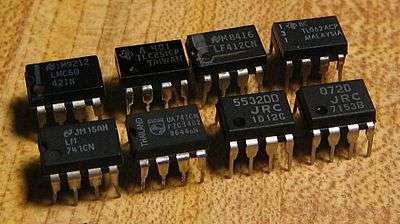Op-amp swapping

Op-amp swapping is the process of replacing an operational amplifier in audio equipment with a different one, in an attempt to improve performance or change the perceived sound quality.
Background
Operational amplifiers (op-amps) are used in most audio devices, and most op-amps have the same pinouts, making the replacement fairly simple compared to more substantial mods. As such, it is common for them to be a target for replacement by DIY enthusiasts, although the benefits of such swapping are dubious. An IC socket can be used to prevent repeated soldering in cases where more than one swap is desired. Some devices are even marketed with socketed op-amps as a feature.[1]
Problems
Although replacing op-amps may be simple, proper design needs to take into account the new device's parameters, which is not done in a simple swap. This has led to a number of problems occurring, such as high-frequency oscillation.[2]
In properly-designed circuits, there are very small, if any, audible differences between suitable op-amps. When experimenters are able to hear differences it is usually because the circuit is poorly designed, the op-amp is not suitable to the circuit that it is being used in (such as CMoy amplifiers driving 32 ohm headphones using op-amps only rated for 600 ohm loads), or because the experimenter has not conducted a properly-controlled blind ABX test and they are imagining differences that don't actually exist.[3]
See also
References
- ↑ Auzentech Now Offers Swappable OPAMPs
- ↑ Swapping Op-Amps... you have checked to see it's stable haven't you ?
- ↑ Op Amps: Myths & Facts- "Some op amps have been judged in the wrong applications. The Cmoy headphone amp is just such an example..."